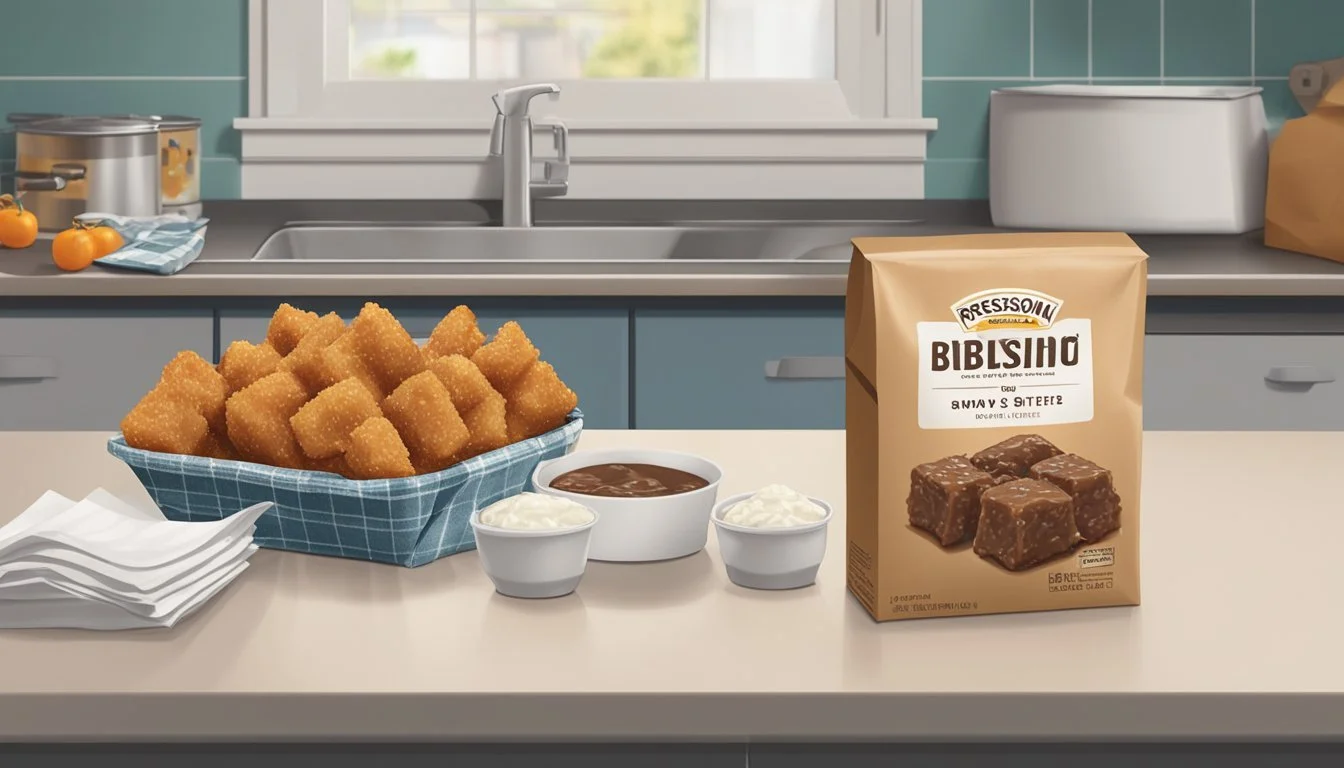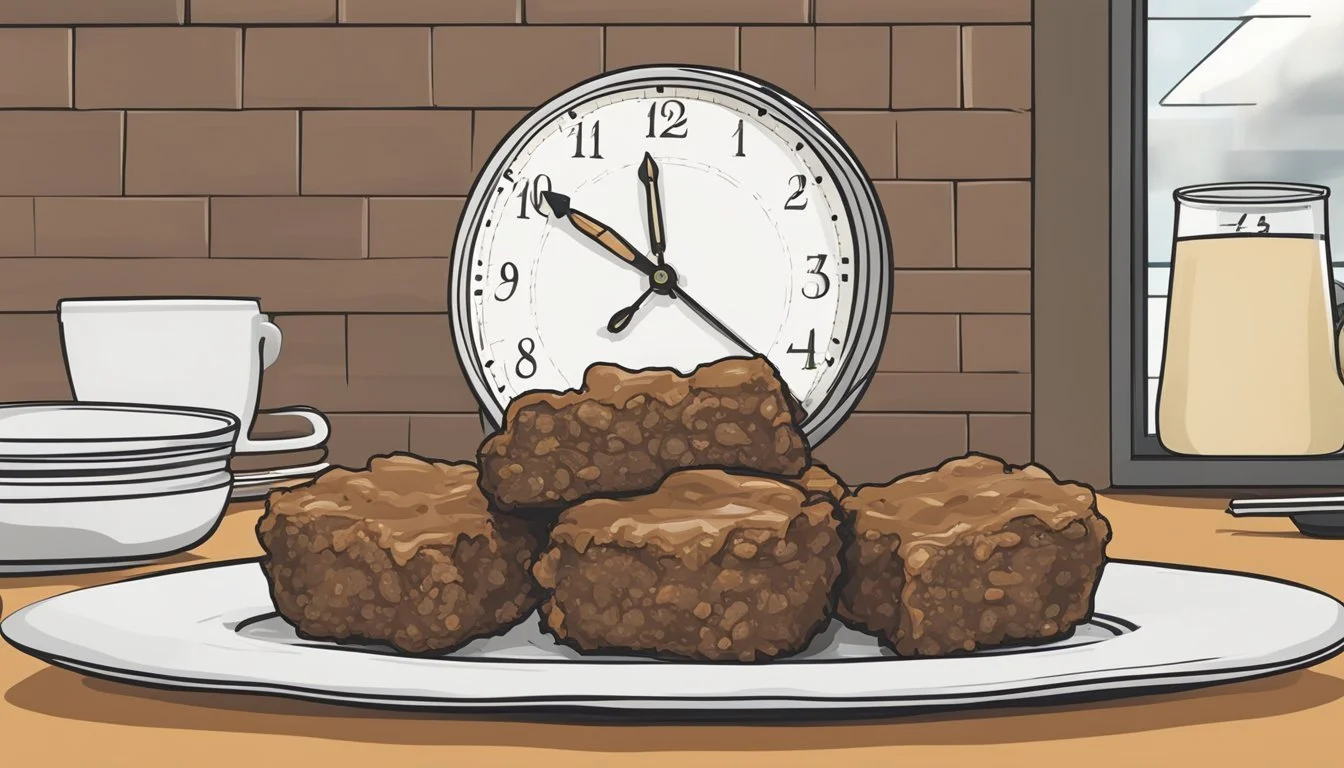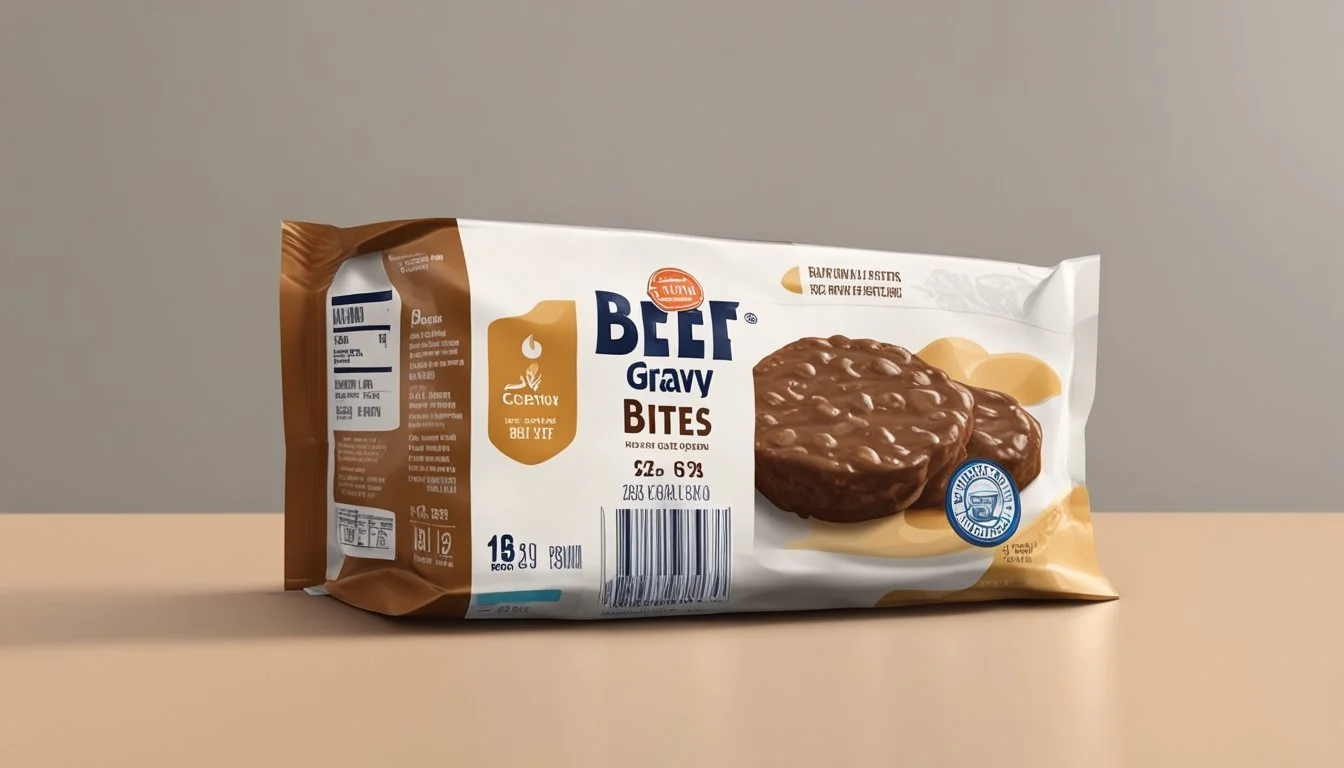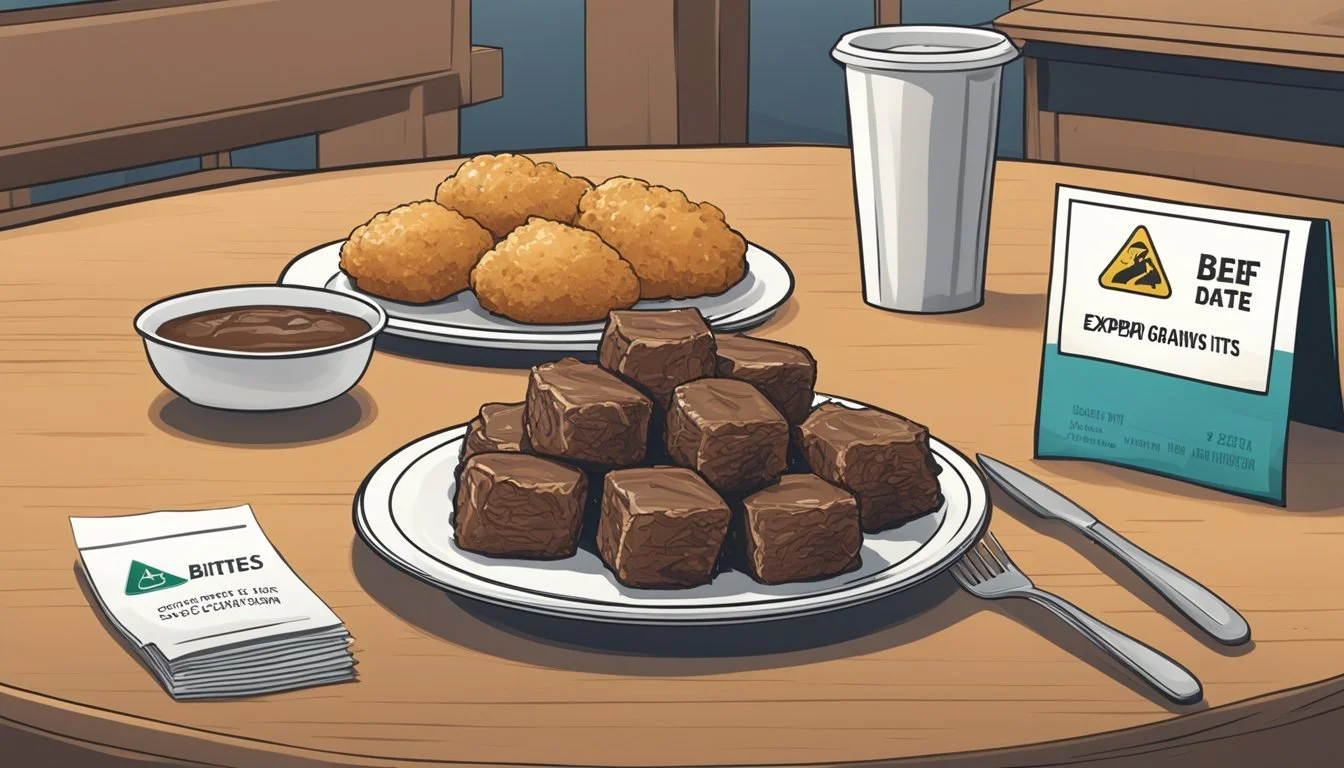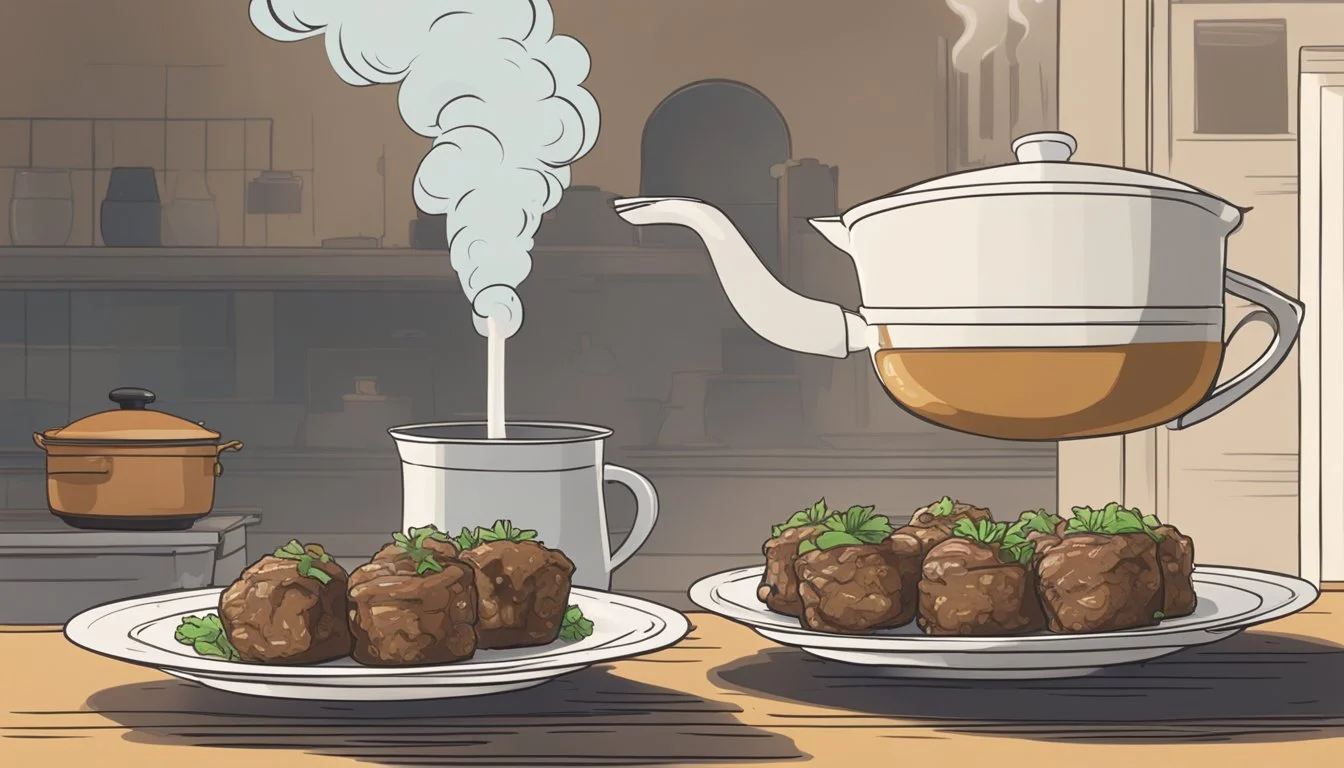How Long Do Beef and Gravy Bites Last?
Shelf Life and Storage Tips
Beef and gravy bites are a convenient and tasty option for quick meals or snacks. Understanding their shelf life and proper storage methods can help prevent food waste and ensure safety. Properly stored beef and gravy bites can last for about three to five days in the refrigerator.
Unopened packages of beef and gravy bites, whether store-bought or homemade, should be kept in a cool, dry place. Once opened, it is crucial to refrigerate them promptly to maintain freshness and flavor. For those looking to extend the shelf life, freezing the bites is a viable option, potentially preserving them for up to six months.
Keeping track of these storage guidelines is essential for maintaining both the quality and safety of your food. Regularly checking and following these practices can help ensure your beef and gravy bites remain a delicious and safe choice for any meal.
Understanding Shelf Life
Shelf life is crucial for ensuring food safety and maintaining the quality of beef and gravy bites. Various factors including storage conditions and ingredients play a significant role in determining how long these items remain safe to consume.
Determining Shelf Life
Shelf life is the period during which food products are deemed safe to eat and are at peak quality. For beef and gravy bites, it's essential to check the expiration date, best if used by, or manufacturer's estimate. Generally, homemade beef gravy can last 3-4 days in the refrigerator, whereas in the freezer, it can extend up to 4-6 months. Similarly, beef bites can last 3-5 days when refrigerated and up to a few months when frozen.
Key Points:
Refrigeration: Keeps beef and gravy safe for a limited time.
Freezing: Extends shelf life significantly.
Packaging: Use airtight containers to prevent contamination and extend viability.
Factors Affecting Shelf Life
Several factors can impact the shelf life of beef and gravy bites:
Ingredients: Perishable items like beef decrease overall shelf life.
Storage conditions: Cold temperatures slow bacterial growth, thereby extending shelf life.
Packaging: Airtight containers are ideal to prevent exposure to air and contaminants.
Food Safety Information: Following guidelines from the USDA or other reputable sources is crucial for maintaining food safety.
Monitoring the best before and expiration dates ensures the food is both safe to use and of optimal quality.
Initial Storage Recommendations
Beef and gravy bites need careful handling to ensure they remain safe and retain their flavor. Correct packaging, temperature, and storage guidelines are essential.
Packaging and Temperature
Beef and gravy bites should be stored in an airtight container to maintain freshness and prevent contamination. Ensure the container is sealed tightly to avoid exposure to air, which can lead to spoilage. Temperature plays a critical role; these bites should be kept in a cool, dry place if intended for short-term storage. This prevents the gravy from spoiling and the beef from becoming unsafe to eat.
For long-term storage, consider keeping them at a consistent temperature to avoid fluctuations that can degrade the quality. If using packaging from a store, check it for any signs of damage or contamination before storage.
Refrigeration and Freezer Guidelines
When refrigerating beef and gravy bites, use an airtight container to maintain their quality. In the refrigerator, they can last for up to 3-4 days. Ensure the refrigerator maintains a temperature below 40°F (4°C). For extended storage, freezing is recommended.
In the freezer, beef and gravy bites can last for 4-6 months if stored properly. Use freezer-safe containers or heavy-duty freezer bags to prevent freezer burn. Label the packages with the date to track their storage time. Maintain the freezer at 0°F (-18°C) to keep the bites in optimal condition.
Identifying Spoilage
Beef and gravy bites can spoil through various means, including visual, textural, and olfactory changes. Recognizing these signs can ensure you avoid consuming spoiled food.
Visible and Textural Changes
Visual inspection is crucial for identifying spoilage in beef and gravy bites. Look for color changes; fresh beef is typically red or pink, while spoiled beef can develop a brown or gray hue. Gravy might show signs of separation, where the fat separates from the other ingredients, indicating spoilage.
Texture is another key indicator. Spoiled beef often feels slimy or sticky, rather than firm to the touch. Any appearance of mold on beef or gravy bites means the food is no longer safe to eat, as mold indicates advanced spoilage.
Odor and Taste Assessment
Odor is one of the most telling signs of spoilage. Fresh beef should have a mild scent, while spoiled beef emits a sharp, unpleasant “off odor” that is unmistakable. Gravy bites, if spoiled, may also give off a sour or rancid smell.
Taste should never be the primary method for identifying spoiled food, as consuming spoiled meat or gravy can lead to foodborne illness. However, if the flavor is noticeably different or bad, discard the food. Monitoring these sensory changes can help prevent consumption of spoiled beef and gravy bites.
Proper Usage and Consumption
Beef and gravy bites are best enjoyed when consumed within their optimal time frame to ensure best quality and safety. This section discusses best practices for consumption along with tips for reheating and serving.
Best Practices for Consumption
For optimal freshness, beef and gravy bites should be refrigerated within two hours after cooking or purchasing. Store them in an airtight container to maintain moisture and flavor. Consume the bites within three to four days, as they are susceptible to bacterial growth over time.
If the bites contain dairy or meat, it's wise to consume them within one to two days. For longer storage, freezing is recommended. In the freezer, beef and gravy bites can stay good for up to three months. Always thaw frozen bites in the refrigerator, not at room temperature, to prevent uneven thawing and potential spoilage.
Reheating and Serving Suggestions
To reheat beef and gravy bites, preheat the oven to 350°F (175°C). Place the bites on a baking sheet and cover them with foil to retain moisture. Heat for 15-20 minutes until they are warmed through. Alternatively, they can be reheated in the microwave on medium power for two to three minutes; however, this can sometimes lead to uneven heating.
Serving suggestions include pairing them with mashed potatoes, steamed vegetables, or even placing them inside a fresh bread roll for a quick and satisfying meal. Adding a touch of fresh gravy can enhance the flavor profile, making the bites even more delicious.
Long-term Preservation
Long-term preservation of beef and gravy bites can be achieved through effective freezing and proper dry storage. These methods help maintain the quality and safety of the food.
Freezing and Thawing Procedures
Freezing is a reliable method for preserving beef and gravy bites over extended periods. Ensure the beef is completely dry before freezing to prevent ice crystal formation, which can degrade texture and flavor. Use freezer-safe containers or vacuum-sealed bags to minimize exposure to air and moisture.
Label the containers with the date for easy tracking. When it's time to use, thaw the beef and gravy bites in the refrigerator for several hours or overnight. This method ensures a gradual and safe thawing process, reducing the risk of bacterial growth. Avoid refreezing thawed beef to maintain its quality and safety.
Dry Storage Solutions
Dry storage is suitable for beef and gravy bites, especially when the gravy mix is in its dry form. Keep these items in a cool, dry area away from direct sunlight. Use airtight containers to protect them from air and moisture, which can cause spoilage or loss of flavor.
Gravy mix in unopened packages can retain its best quality for around two years if kept in optimal conditions. For extended shelf life, some gravy mixes may last up to five years past the 'best if used by' date. Regular checks on the stored items ensure they remain viable for consumption.
Safety Precautions
When handling beef and gravy bites, maintaining proper safety standards is essential to avoid foodborne illnesses. This involves ensuring correct food handling and verifying the packaging integrity to maximize shelf life and prevent bacterial growth.
Food Safety and Handling
Proper handling of beef and gravy bites is crucial to ensure they remain safe to eat. Beef bites should be refrigerated within two hours of cooking to minimize bacterial growth. If kept at room temperature for longer periods, the risk of bacteria like Salmonella and E. coli increases significantly.
When reheating, make sure the bites reach an internal temperature of at least 165°F (74°C). This temperature is sufficient to kill most harmful bacteria.
Always use clean utensils and surfaces when handling these bites. Cross-contamination with raw meats or unwashed vegetables can introduce harmful bacteria.
Packaging Integrity Evaluation
Inspecting the packaging of beef and gravy bites is vital. Look for any signs of damage, such as tears, punctures, or swelling, as these can indicate compromised integrity and potential bacterial contamination.
Pay attention to expiration dates and "best if used by" labels. Consuming products past these dates may affect flavor and safety.
If the packaging is vacuum-sealed or in airtight containers, ensure they remain sealed until use. This type of packaging helps prevent bacterial growth and extends the shelf life.
In summary, by adhering to these safety precautions, beef and gravy bites can be enjoyed without compromising on health and safety.
Culinary Considerations
When making beef and gravy bites, understanding the interaction of ingredients and preparation techniques is crucial for achieving the best flavor and texture. Detailed below are essential insights into gravy mixes and alternatives, as well as enhancements for homemade gravy.
Gravy Mixes and Alternatives
When convenience is key, pre-made gravy mixes are a popular option. These mixes often contain ingredients such as cornstarch and salt as thickening agents, ensuring a consistent texture. It's essential to choose high-quality mixes that complement various meats like beef, turkey, and chicken.
Alternative thickening agents such as arrowroot powder or potato starch can be used for a gluten-free option. These alternatives provide similar consistency without altering the flavor profile of the meat-based gravy.
Additionally, store-bought broths can serve as a base when making gravy from scratch. Beef broth is commonly used, but chicken broth or vegetable broth can be applied depending on the dish's requirement.
Enhancing Homemade Gravy
Creating homemade gravy offers the advantage of customizing flavors. Butter, beef drippings, and finely chopped mushrooms can create a rich base. Seasonings such as salt, pepper, and fresh herbs add depth.
For thickening, a roux made from equal parts melted butter and flour is often used. This forms a crucial element in maintaining a smooth texture. More traditional thickening agents include cornstarch mixed with cold water.
Taste can be adjusted with additional beef broth and seasonings. Simmering the gravy allows flavors to meld, resulting in a balanced and flavorful sauce. For added complexity, a splash of red wine or Worcestershire sauce can enrich the gravy, making it a standout companion for beef and gravy bites.
Complementary Dishes and Recipes
When serving beef and gravy bites, certain dishes can elevate the meal and provide a balanced culinary experience. This section will explore protein pairings and side dishes that complement the rich flavors of beef and gravy bites.
Pairing with Protein Dishes
Pairing beef and gravy bites with other protein dishes can create a more substantial meal. Roast chicken seasoned with black pepper and fresh parsley balances the rich gravy. Seared pork chops with a hint of paprika also complement the savory beef flavors.
Lamb chops marinated in red wine and Worcestershire sauce match well with the gravy bites, enhancing their depth. Grilled salmon seasoned simply with salt and pepper provides a lighter protein option that contrasts nicely with the hearty beef.
For those who enjoy mixing proteins, a combination of beef and gravy bites with Mediterranean-style lamb meatballs creates a flavorful and diverse meal.
Side Dishes and Accompaniments
Side dishes are pivotal in creating a well-rounded dining experience with beef and gravy bites. Mashed potatoes are a classic choice, absorbing the gravy and adding creamy texture to the dish. Garlic mashed potatoes with a sprinkle of fresh parsley enhance this combination.
Vegetable medleys such as roasted onions, carrots, and green beans provide a contrasting sweetness and freshness. These vegetables can be seasoned with beef broth, salt, and black pepper during roasting for added depth.
Buttered noodles or herbed rice are lighter starchy alternatives that pair well with the savory beef and gravy, making the meal less heavy. Thanksgiving dinner staples like stuffing or cranberry sauce can also offer interesting flavor contrasts and bring a holiday feel to the meal.
After Opening: Storage Dynamics
When beef and gravy bites are opened, proper storage is crucial to ensure quality and safety. This involves careful handling and observing any changes that might indicate spoilage.
Handling an Opened Package
Once the beef and gravy bites are opened, transfer them to an airtight container to maintain freshness. Refrigerating is essential; they should be kept at a temperature below 40°F (4°C). Typically, once opened, they can last for about 3-5 days in the refrigerator.
Avoid leaving the bites out at room temperature for extended periods. If they remain unrefrigerated for more than two hours, discard them to prevent bacterial growth. Always check the "best before" date on the package and consume the product promptly within the recommended timeframe. If the bites were commercially packaged, their shelf life might be slightly extended due to preservatives.
Observing Changes Post-Opening
After opening, regularly inspect the beef and gravy bites for any signs of spoilage. Look out for changes in color, smell, and texture. If there are meat juices that appear cloudy or have an off odor, it’s best to discard the product. Visually inspect for any bulging in the container, which can indicate bacterial activity.
Monitor the presence of any unusual spots or mold growth. Unopened gravy should also be checked for seal integrity; compromised packaging can speed up spoilage. By observing these indicators, you can ensure that the beef and gravy bites remain safe and enjoyable to eat for their full refrigerated lifespan.
Special Circumstances and Advisories
Proper storage is crucial for maintaining the quality and safety of beef and gravy bites, whether dealing with leftovers or understanding commercial labels.
Addressing Leftovers and Partial Use
When dealing with leftovers, refrigeration is crucial. Beef and gravy bites stored in the refrigerator should be consumed within 3-4 days to ensure safety. If the gravy contains dairy or meat, it’s best to consume it within 1-2 days.
For longer storage, freezing is a viable option. Store beef and gravy bites in airtight containers or freezer bags and they can last for up to 4-6 months in the freezer.
When reheating, ensure the beef and gravy bites are heated to an internal temperature of at least 165°F (74°C). This ensures any potential bacteria are eliminated. If thawing, do so in the refrigerator overnight rather than at room temperature to prevent bacterial growth.
Understanding Commercial Labels
Commercially packaged beef and gravy bites often have labels with expiration or best before dates. These dates indicate the period within which the product is expected to retain its best quality.
Unopened canned gravy, for instance, generally retains its quality for about 3-5 years when stored in a cool, dry place. It's advisable to check the packaging for specific storage recommendations.
Once opened, canned gravy should be refrigerated. It can last in the refrigerator for up to 1-2 weeks if stored in an airtight container. Always inspect for signs of spoilage, such as off smells or colors, before consumption.
Observing these guidelines helps ensure that beef and gravy bites remain safe and delicious to eat.
Enhancements and Flavoring
Maximizing the flavor of beef and gravy bites involves thoughtful use of aromatics, seasonings, and cooking techniques to create tender, delectable pieces. This approach elevates simple ingredients into a culinary experience.
Utilizing Aromatics and Seasonings
Aromatics like garlic and onions play a crucial role. Mince garlic finely and sauté it in olive oil or butter until fragrant. This creates a rich base that infuses the beef with deeper flavors. Herbs such as thyme, rosemary, and bay leaves add complexity to the profile.
Seasonings like salt, pepper, and smoked paprika enhance the natural taste. A splash of soy sauce or Worcestershire sauce can boost umami elements. Combining these ingredients judiciously can transform the beef bites into savory, aromatic delicacies.
Creating Tender and Flavorful Bites
Selecting the right cut is critical. Ribeye is an excellent choice due to its marbling, which adds tenderness and flavor. Cook the beef until it reaches the desired doneness, allowing the marbling to melt and keep the meat juicy.
Marinating the beef with a mixture of olive oil, garlic, and fresh herbs overnight tenderizes the meat further. Adding a touch of cream to the gravy introduces a velvety texture. Be sure to whisk the cream into the gravy gradually to avoid curdling.
Patience in cooking and thoughtful ingredient pairing results in tender, flavorful bites that are sure to delight.




